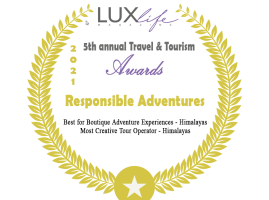10 Amazing festivals of Ladakh
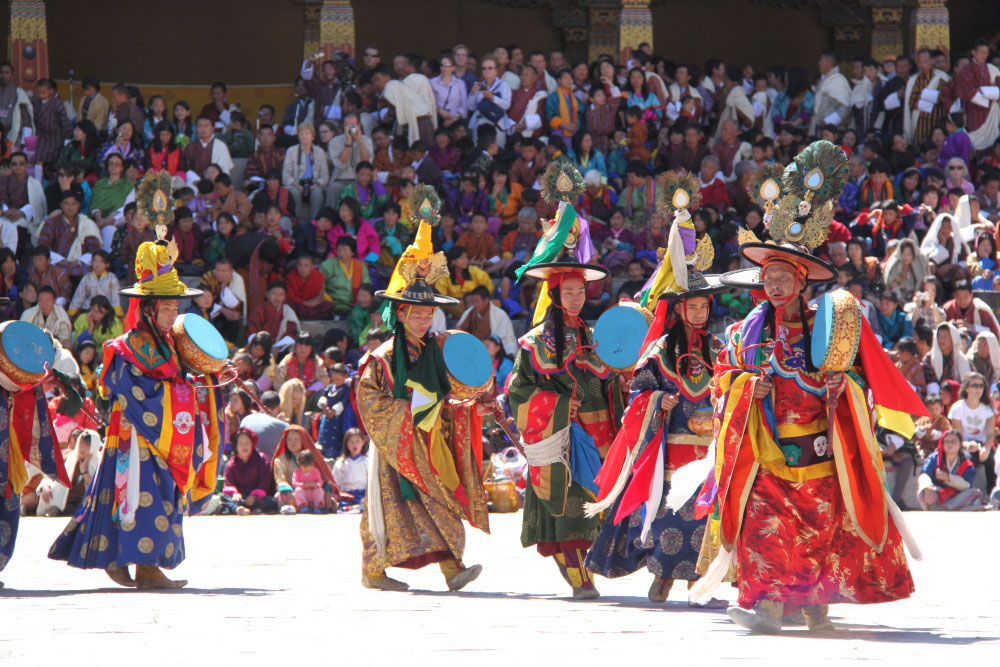
Ladakh is known for its grand festivals with large colourful masks; traditional dancing and singing are common at many of the cultural festivities in the Leh region. Leh, the former capital of Ladakh, was once the Himalayan Kingdom. It is now a district of Leh district in the Indian state of Jammu & Kashmir. It is the second-largest district in the country, area-wise. The Leh Palace, where the royal family resided, dominates the town. It was constructed as a replica of the Potala Palace. Leh celebrates many religious festivals due to the massively influencing Tibetan Buddhist culture. Although the festivals appear similar in celebrating good over evil victories, each monastery has a deep history. The festivities are in honour of the great monks who founded the institution. Here are the major festivals in Ladakh
14 health benefits of trekking
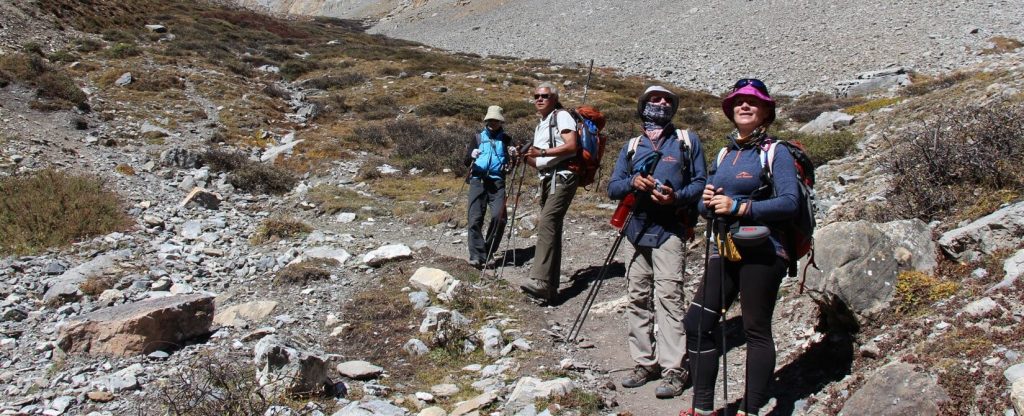
Most of us know the importance of exercise. However, it is vital to prioritize the activity that gives us the most significant health benefit in our increasingly busy lives. Working out at a gym might appear less than desirable after a day of sitting at a desk in the office. Therefore, it is unsurprising that an increasing number of people are beginning to ditch the gym and have started hitting the trails to enhance their health. Moreover, the great news is that just half an hour of walking or hiking can significantly impact your health. Trekking in the mighty Himalayas or any mountainous area offers a wide range of benefits to our mind, body, and soul: the breathtakingly picturesque views and the serene and quiet moments of self-reflection. Trekking and backpacking outdoors give many health benefits that range from the physical to mental and spiritual. There is something naturally majestic and gratifying, which eventually provides an abundance of confidence as you increase your habit of trekking in the lap of mother nature. One significant benefit of trekking is under the sun. The sun is the best source of vitamin D. It has a major contribution to the benefits 5 – 8 listed below. Are you aware that about 1 billion people suffer from Vitamin D deficiency? 1. Experience the rich flora and fauna You can come across unusual birds, diverse wildlife, beautiful plants, and trees with medicinal valuable healing properties that can rarely be spotted in crowded cities. 2. Invigorated heart and lungs You can get clean, fresh air that enhances your respiratory system and the capacity of the lungs. The more fresh air you breathe, the more capable your lungs become; the more blood the heart pumps, the healthier it gets. In addition, hiking with a backpack for extended periods makes for a great cardiovascular workout, especially when you push yourself to a point when talking becomes quite difficult. Giving yourself good exercise not only invigorates your heart but also lowers cholesterol and blood pressure. 3. Improved Fitness and Weight Loss Several surveys show that extended periods of daily hiking with a backpack between 6-8 hours turn the body into a competent fat-burning and testosterone-fueled machine. Trekking involves walking up and down hills. The uphill walks can bring the heart close to the target heart rate while giving it time to recover on the downhill walks. 4. Perseverance and Discipline Long-distance walking while persevering to reach a destination tests the hiker’s patience and determination. The trekkers must abide by a few guidelines and remain disciplined in the mountains as the hills share risks. Trekking can be a solo activity or group; if trekking in a group, teamwork needs to be involved while walking with the team. Helping each other adds to the fun of the journey while motivating the less experienced hikers. 5. Mental benefits Mountains can provide an unmistakable serenity level rarely available in a city’s hustle and bustle. The scenic views, The picturesque views, beautiful water bodies, the snow-clad mountains, and the beautiful starry nights help calm the mind. The breathing of fresh air and admiring the breathtaking nature make our bodies release endorphins, a happy hormone that reduces stress levels and makes us happy. 6. Longer life. Research has shown that hiking for 8 kilometres at a slow pace is sufficient to reduce the risk of strokes, heart failures, and heart attacks slightly above 30%. Eight kilometres is estimated at around 10,000 steps. You can monitor this in one of the several modern intelligent gadgets. Studies have also shown that remaining active is a significant way to reduce cancer risk. Working out lowers the estrogen in your bloodstream, the primary reason breast cancer inactive women are less likely. 7. Revamp your mood Doctors encourage exercise such as walking to avoid depression increasingly, and numerous clinical studies have shown that training has improved depressive symptoms almost as well as anti-depression medicine. In addition, trekking is a perfect mood booster as it combines the physical benefits of a workout with the added mental health of being in nature while socializing with other hikers on the trail. Increasing studies show a link between mental well-being and the number of time people spend in nature. In addition, some clinical studies have shown other benefits of spending extended periods in the heart: reducing stress and blood pressure, improved energy levels, and sound sleep. In the ever-increasing fast-paced society, increased emotional well-being and reduced stress are some of the incredible health benefits of trekking! 8. Strong and Agile bones The leg muscles’ agility and flexibility increase with the up and down walk on the undulating terrain. Trekkers have well-toned leg muscles that look good and stabilise the ankles. Some trails involve climbing as much as 1000 meters and the same descent, which provides an excellent workout to the legs, core, and arm muscles. Hiking with a reasonably heavy backpack can help increment your bone density. It has been recorded that trekking has helped people with arthritis and back pain (you need to adjust your backpack’s straps to avoid more damage). The hiking trails can be a mixture of comfortable soft ground or rocky paths that can twist your ankle, and you need to be mindful when hiking. Carrying a suitable load is helpful to give yourself a better workout and a perfect way to increase your bone density. An added benefit of trekking is a low-impact exercise, which is ideal for those suffering from joint pain. 9) Improve your balance Hiking on the hills is an excellent way to improve mental agility to strengthen your core, which in turn helps to improve your balance. The irregular surface helps the small muscles stabilize your ankles to strengthen and react faster when you lose balance. These muscles are essential for proprioception – it is your body’s sixth sense, which helps give you the ability to catch yourself when you trip or prevent tripping with better balance. Unfortunately, this ‘sixth sense’ will decline like
Top twenty highest mountains in the world
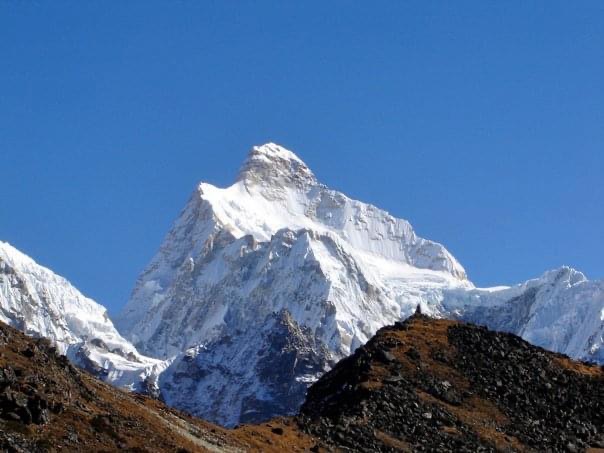
Top twenty highest mountains in the world. All 20 of the highest summits are located in central and south Asia. They are each measured as individual peaks and not as part of a mountain range. Mauna Kea, a dormant volcano that is partially submerged that is found on the island of Hawaii, is the tallest mountain in the world if measured from the Pacific Ocean floor to its summit at a staggering 10 203 meters in technicality. However, the sole objective of this list is to look at peaks whose bottom is found above sea level, i.e., both the base and top of the mountain have to be above sea level. 20. Nuptse, Mahalangur Himalaya Nuptse in Tibetan/Sherpa means’ Western peak.’ It is located in the Mahalangur range in the Khumbu region and is one of Mount Everest’s mountains. It was first ascended in 1961 by Tashi Sherpa and Dennis Davis. Nuptse is the 20th on this list of the highest mountain peaks in the world. 19. Distaghil Sar, Hispar Karakoram This peak is located in the Karakoram range of the Gilgit-Baltistan region of Pakistan. Dishtaghil Sar is almost three kilometres wide and 7884 meters in height. Gunther Starker and Diether Marchar, who were part of an Austrian expedition team, were the first to climb it in 1960. It is the highest peak of the Hispar Muztagh range. 18. Himalchuli, Manaslu Himalaya The Himalchuli peak is a part of the Nepal Himalayas and prevails south of Mount Manaslu, one of the world’s highest mountains. Himalchuli has the second-highest summit in its mountain range, i.e., Mansiri Himalaya, at 7892 meters. Hisashi Tanabe of Japan was the first person to have climbed it in 1960. 17. Gasherbrum IV, Baltoro Karakoram Gasherbrum IV is one of the peaks in the Gasherbrum mountain range, as the name suggests, and is located in Pakistan. It is at the northeast end of the Baltoro Glacier in the Karakoram range of the greater Himalayas. Gasherbrum means “Shining Wall” in the Urdu language. The rest of the three peaks in the Gasherbrum range are well above 8000 meters, while this peak is about 7932 meters in elevation. 16. Annapurna II, Annapurna Massif The Annapurna peaks are part of the Annapurna massif, forming a vital part of the Himalayan ranges. At 7934 m high, Annapurna II lies in the Annapurna range’s eastern fields, and quite contrary to the common belief in people, it is an independent peak. This peak was made by Richard Grant, Chris Bonington, and Ang Nyima Sherpa in 1960 and has seen very few ascents. 15. Gyanchung Kang, Mahalangur Himalaya Gyanchung Kang lies between the tallest mountains above 8000 meters, namely, Cho Oyu and Everest. It is part of Mahalangur Himalaya, spreading between Nepal and Tibet Autonomous Region of China. It was first climbed in 1964 by the Japanese. Gyanchung Kang marks an essential point in this list because it is the highest mountain globally, below 8000 meters. It is 7952meters in height. 14. Shishapangma, Jugal Himal We are now entering the elite mountain peaks because all the above mountains are above an altitude of more than 8000 meters. Despite being the lowest of all 8000-meter mountains, it does not necessarily make climbing any easier. It is located between Tibet and Nepal. It is in a restricted area where foreigners are not permitted to visit on security grounds. The 8013-meter high mountain Shishapangma got its name, which means “crest above the grassy meadows” in the Tibetan dialect. 13. Gasherbrum II or K4, Baltoro Karakoram Gasherbrum II lies above Gasherbrum III, and as mentioned above, it is located in the Karakoram range. The 8035-meter peak was first climbed in 1956 by an Austrian climber. Gasherbrum II is the fourth highest mountain in the Karakoram range and is known as K4. 12. Broad Peak or K3, Baltoro Karakoram The broad peak at 8051 meters is the 12th highest mountain known as Falchan Kangri. It produces some very harsh conditions around it, and climbing is nearly impossible in these ranges for most of the year. 11. Gasherbrum I or Hidden Peak or K5, Baltoro Karakoram K5 is the fifth peak of the Karakoram range and received another name in the late 20th century. The name was hidden peak due to the extreme remoteness in which it is located. Pete Schoning and Andy Kauffman, part of an eight-member American team, were the first to climb this 8080-meter peak in 1956. 10. Annapurna I, Annapurna Massif Now that we have reached the top 10, the summits’ elevation keeps getting higher, and the number of successful summits is less. Annapurna I’s main peak is the tenth tallest mountain globally, with an altitude of 8091 meters. Annapurna got its name from Sanskrit, which means “sufficient grains.” 9. Nanga Parbat, Nanga Parbat Himalayas Located in the Gilgit-Baltistan region of Pakistan, Nanga Parbat stands at 8126 meters and is locally known as Deo-mir. It is also known as “Killer Mountain” because it simultaneously has one of the highest numbers of deaths and unsuccessful expeditions; it has never been climbed during winter. The Germans gave it a term of endearment, “Unserberg,” meaning our mountain in the 1950s. 8. Manaslu, Manaslu Himal Manaslu derives from the Sanskrit word ‘Manas,’ which means ‘knowledge’ or ‘spirit.’ It lies in the Himalayas’ Gorkha district and is close to the Annapurna range. Manaslu stands at 8163 meters. A Manaslu Conservation Area Project has also been set up to maintain sustainability and conservation goals. 7. Dhaulagiri I, Dhaulagiri Himal The Dhaulagiri mountain range drains its snow across hundreds of kilometres from the Kali Gandaki river in Nepal, right into India’s Ganges. The highest of its peaks stands at 8167 meters high and is the seventh-highest peak. It is the highest point in the Kali Gandaki river valley. Dhaulagiri’s name is from the combination of two Sanskrit words – ‘Dhaula,’ which means dazzling, and Giri, meaning ‘mountain.’ 6. Cho Oyu, Mahalangur range Himalaya Cho Oyu means “Turquoise Goddess” in Tibetan. It is
The Everest region to ban plastic bags and bottles from January 2020
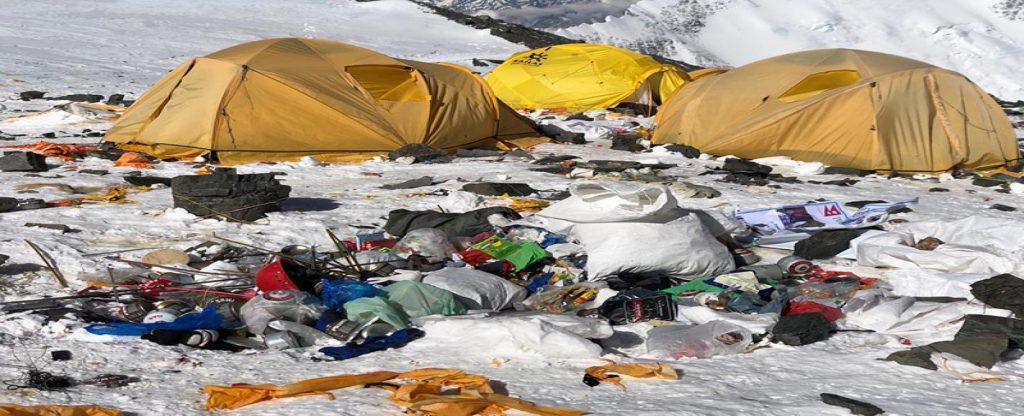
The Everest region to ban plastic bags and bottles from January 2020 The local government will ban plastic products below thirty microns, including beverages in plastic containers, from January 2020. The Everest region is all set to become a plastic-free zone. Having struggled for decades with piles of garbage in the Everest region, which has caused to gain unwanted notoriety as the ‘world’s highest garbage dump,’ the local administration has approved a plan to declare the entire area a ‘no plastic’ zone from next year. The Khumbu Pasang Lhamu Rural Municipality of Solukhumbu district has decided to impose a ban on plastic bags, bottles, and other products, indicating their adverse impact on human health, especially in the whole of this region. According to the Chief administrative officer, Ganesh Ghimire, this rural municipality has decided to use plastic bags with less than thirty microns to be prohibited in this region while passing its policies and programs for the current fiscal year. Even bottled drinks will be banned from the area with the new rule. Only beverages packaged in cans will be allowed from January onwards. “The home to the tallest mountains in the world has witnessed havoc created by plastic in this fragile region over the years,” said Mr Ghimire. “The Everest region keeps getting inundated with plastic with the growing number of visitors. Therefore, this initiative is necessitated to get rid of plastics from this region.” According to Mr Ghimire, no one – be it locals or tourists- will be allowed to bring or use plastic bags and bottles inside the rural municipality once the rule is implemented. “We will only allow canned drinks since cans are less environmentally hazardous than plastic. The locals will also recycle the cans,” Mr Gimire said. However, he also noted that imposing such a strict ban was essential as the region is plastered with plastic products. “We will only allow canned drinks because cans are not as hazardous for the environment as plastic. Locals can also recycle cans,” Ghimire said. “It was necessary to impose such a strict ban because the region was plastered with plastic and other items made of plastic.” This region has also been struggling badly with solid waste management contributed by the visitors to this area year in and year out. Several hundred mountaineers, climbing Sherpas, guides, and other high-altitude support staff en route to Everest leave behind tonnes of biodegradable and non-biodegradable wastes such as empty oxygen canisters, bottles, kitchen waste, ropes, and faecal matter. All of this results in the pollution of the area and the settlements downstream. The government rule that every climber must bring back at least 8 kgs of garbage—the estimated amount of trash generally produced by each climber on average—has continued to be mostly unproductive. A 45-day ‘Everest Cleaning Campaign,’ led by the rural municipality that various governmental and non-governmental agencies supported, had brought down nearly 11,000 kgs of garbage from the world’s tallest peak earlier this year. Plastic in multiple forms and sizes was the major item in the collected trash. This campaign was one of the most ambitious clean-up projects conducted on Everest at a cost of more than RS 25 million. “Asides from disturbing the natural environment, a large amount of money has to be spent annually to clear all this garbage,” said Ghimire. The local authority will distribute five alternative bags free of cost to each resident in this rural municipality. There are roughly 2000 households. One of the biggest fears the local authority has is the worsening of plastic pollution with the opening of a road that connects Kharikhola in ward-1 of the rural municipality with Chaurikharka in ward-3. According to the rural municipality’s estimate, nearly 150,000 tourists use this route annually. The number will rise to as much as half a million next year. “More tourists/trekkers on this route could mean more plastic in the region,” Mr Ghimire said. “The time is right to prohibit plastic here before we face an unusual amount of plastic soon.” Yoga Retreats in Nepal Check out our Trekking packages for Nepal, Bhutan, India, and Tibet.
Custom-made Hindu pilgrimage tour of lower Mustang during the monsoon
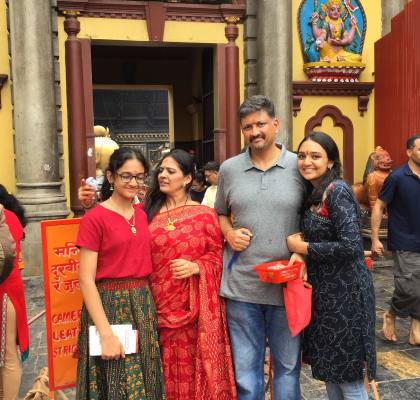
The custom-made Hindu pilgrimage tour of the lower Mustang during the monsoon A friend recommended his colleague to contact me for their tailor-made holiday, a pilgrimage to Nepal’s Kathmandu, Muktinath, and a lower Mustang trip. We communicated over email and had a few WhatsApp conversations, discussing the fine details of the type of experience the family of 4 was expecting. I learned they were a pious Hindu family from South India but are currently based in Kuala Lumpur, Malaysia. I met them on the 24th of July at Tribhuvan International airport. They were brought over to their Boutique Hotel in the tourist district of Thamel. We went for lunch after checking into the Hotel. After that, they were taken on a walking tour of the Ason Spice market and the Kathmandu Durbar Square. The sights, sounds, and smells of Kathmandu city astonished the family members. In addition, the family was taken aback by the ancient architecture of Basantapur Durbar square, a World Heritage site. We parted ways in the evening as we had a full day of sightseeing the next day. Fullday of Temple visits and a World Heritage site. We started early, at 8 am, for our full day of pilgrimage/sightseeing. We went to Budhanilkantha on the northern outskirts of Kathmandu first. There is an ancient statue of reclining Vishnu at this religious site. It was buzzing with activities of pilgrims, both local and from India. Next, we went to the Guheshwori temple dedicated to Goddess Suttee, where the family spent prayer and offering. The last Hindu temple of the day was Pashupatinath – the most significant of all temples dedicated to Lord Shiva. We were fortunate to go around the time when all four doors facing the North, South, East, and West were open to see the “Shivaling”; the family was fortunate to receive 3 Rudraksha necklaces from the priest in the temple’s inner sanctum. The final part of the sightseeing was Bhaktapur, another one of Kathmandu’s World Heritage sites. Upon reaching Bhaktapur, we went to a restaurant for lunch first. The visitors were fascinated by Bhaktapur’s ancient architecture, world carving, and stone-paved alleyways. We spent a long time there, and by the time we reached the Hotel, we had spent 12 hours on tour; usually, a full-day tour takes 6-7 hours. Again, it shows how absorbed they were with the temples and the World heritage site. Flight to Pokhara It was the third day, and we were flying to Pokhara after breakfast. The flight was only delayed by fifteen minutes. Despite the flight route being cloudy, it was a smooth flight despite the monsoon season. We collected our baggage, got to our vehicle, and went to our Hotel. We went for a walk after checking into the Hotel and had lunch at the Lakeside. The family got their first taste of Thakali Dal bhat. The Thakali are an ethnic group living by the Kali Gandaki river (Thak Khola) valley. Their womenfolk are renowned innkeepers and are known to make the most delicious Nepali staple of Dal-bhat, consisting of rice, lentil soup, vegetable curry, chicken, or goat curry accompanied by some sour/spicy pickles. They loved their first taste of the Nepali Thali (set) meal. Shankar, Priya, and their two daughters, Shruthi and Smrithi, were quite energetic and wanted to do more than chill out by the Lakeside in Pokhara. So, I arranged for a van to take us to see a few sights in Pokhara. We started by visiting the Bindabasini temple and witnessed the Seti river gorge and Davie’s fall. The Davies waterfall was impressive as the volume of water was tremendous due to the monsoon season. Finally, we went down to Gupteshwor Mahadev cave, which was cooling with the breeze caused by the pouring of Davie’s fall on the opposite side. We returned to the Lakeside and parted ways after planning to meet at the restaurant at 6.30 am for breakfast as we had an early flight to Jomsom. Jomsom, Lower Mustang and Muktinath tour We met as planned for breakfast, loaded our jeep with our luggage, and left for the airport. However, the jeep was requested to wait at the parking lot until our flight took off. I had to do this as they were on a tight schedule, and all the flights were fully booked. The alternate plan was to drive up to Jomsom if the flight got cancelled, as the monsoon rains along the flight route could cause poor visibility resulting in flight cancellations. Fortunately, the flight was only delayed by an hour, and we landed in Jomsom after another smooth flight. We checked into our deluxe Hotel Om’s Home, which has been around since 1976. Bollywood superstars Amitabh Bachan and Danny Denzongpa, along with the film crew of a Bollywood movie, stayed during the shooting of “Khuda Gawah” in 1992. Jomsom is the Mustang district headquarters, also known as a cold desert and windy valley. The wind starts to blow from 10 am onwards and continues until evening. The plan was to spend the next three days going on jeep rides combined with some hiking to get acclimatized to altitude before going to Muktinath for their pilgrimage; as they come from sea level and tropical weather, we were preventing high altitude sickness and getting appropriately acclimatized. We went for a long walk that involved getting to the Kali Gandaki river bank, walking over to old Jomsom, and having lunch. Then, we walked back to our Hotel for high tea and left towards Shyang village in the afternoon. In the evening, we returned to the Hotel in time to order dinner and go for our shower before dinner. We were pleasantly surprised when we came out for dinner by some live music at the Himalayan Java café at the Hotel. Shruthi jumped in to sing a couple of numbers with the Barista, who also doubled as a musician in the evenings when they had some customers. It was a fun day, and
Training for a trek with Life Fitness Bike
10 Health benefits of an exercise bike while training for a trekking vacation. Taking care of health is essential. We have many worries in our daily lives, we run around all the time to take care of everything, but we cannot forget to spend some time on physical activities that help us keep fit, relax and move the body. This exercise routine makes us more active, increasing our well-being. In this scenario, the exercise bike is an excellent ally. Know the benefits of the exercise bike. To know more tips about exercise bikes, you can find them at Life fitness bike.
Benefits of black tea
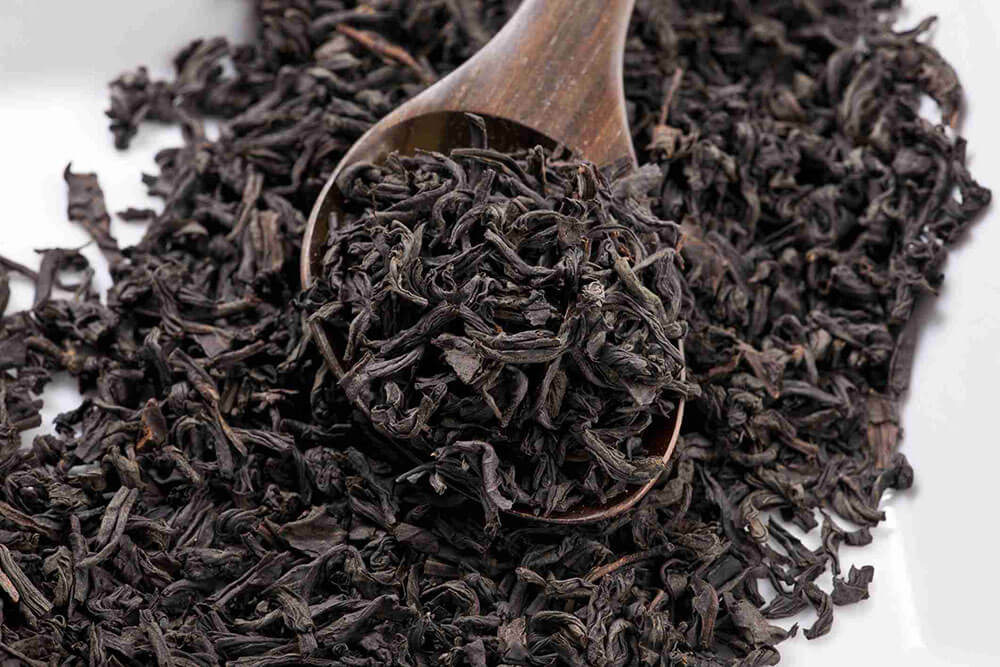
Fights free radical damage Lowers high cholesterol Lowers high blood pressure Fights cavities Promotes weight loss If you are a tea lover, please know that it is the most popular brew globally. (Coffee is gaining popularity rapidly!). It is not just a pleasant and refreshing drink; beneficial components like flavonols, catechins, tharubigins, and theaflavins in black tea make it an exceptional brew. Black tea has been flying under the radar, while green tea has been grabbing headlines regularly. Read on to discover or learn that an everyday old cuppa is just as good for you. How are the two different? Although green and black tea come from the same plant known as Camellia sinensis, they are processed differently, giving them different compositions. While black is fermented, green tea goes through no fermentation, so the dark colour and bitter taste of the former. Even though the total number of flavonoids remains similar, flavonoids’ nature undergoes some changes after fermentation. Some catechins get oxidized or condensed to theaflavins during the process, which results in the black tea having roughly 45 times higher content of thearubigins and 99 times more content of theaflavins (both are tannins) compared to green tea. However, green tea contains three and a half times more catechins than black tea. Due to this chemical composition, black tea holds the following benefits for your health and well-being. 1. Fights damages caused by free radical With their potent antioxidant properties, polyphenols help fight the damaging effects of free radicals, like catechins, theaflavins, and thearubigins. Free radicals form naturally in one’s body during the conversion of food to energy. However, some specific factors can increase their numbers, challenging the body to neutralize aptly. These days the increased intake of processed, refined food, alcohol, smoking, and extended exposure to the sun contributes to multiplying the number of free radicals in our body. These cause oxidative damage to your cells. The damage contributes to premature ageing and plays a role in contributing to diseases like diabetes, heart disease, and cancer. A cup of black tea can be translated as providing a coat of protective and anti-ageing antioxidants by repairing the damages caused by free radicals. 2. Lowers high cholesterol High cholesterol levels can increase the risk of atherosclerosis (which happens when plaque builds up inside your arteries) and even heart issues. If you are fighting hard to keep your bad cholesterol in control, your daily dose of black tea can lower it. A study was conducted on slightly high cholesterol people; they had five black tea servings daily for three weeks. Drinking this brew helped reduce LDL cholesterol by more than 10 %, and total cholesterol levels were down by 6.5 %. Regular tea consumption might also help to reduce LDL oxidation and minimize the risk of atherosclerosis. In addition, tea catechins are thought to counter cholesterol irregularities by limiting cholesterol absorption in the intestine. 3. Help control high blood pressure Hypertension or high blood pressure is the root of many severe medical conditions such as stroke, kidney failure, heart failure, and heart attack. Fortunately, a pleasing wellness lifestyle, good eating habits, keeping the weight healthy, and good physical exercise go a long way in controlling your blood pressure. In addition, an odd cup of plain black tea is a bonus to keeping hypertension at bay. Another study showed that having three regular cups of black daily for half a year decreases both systolic and diastolic blood pressure in the subjects. Tea may impact hypertension with improved cell functioning that line your blood vessels and heart. Another possibility relates to its ability to burn abdominal fat, which helps control blood pressure. When this was applied to public volunteers, the study showed a reduction of up to 10% in the risk of hypertension and 7-10% in heart disease. 4. Prevents cavities Tooth enamel usually repairs itself by using minerals from saliva and fluoride from toothpaste or other tea sources for those who drink it. However, more minerals are lost when the tooth decay continues, resulting in cavities. Having tea regularly enhances tooth enamel protection and repair with components such as Streptococcus sobrinus and Streptococcus mutans. 5. Boosts weight loss If you are on a program to lose weight, black tea can be your added benefit. Several studies have shown that the composition of bacteria in the intestine changed, increasing the number of bacteria associated with lean body fat and ridding bacteria linked with obesity. While it is still essential to be attentive to diet and regularly lose those unwanted kilograms, black tea can improve metabolism. 6. Improves immunity while fighting infections We are routinely exposed to harmful germs that can trigger various illnesses. Generally, our immune system can protect and fight off diseases. However, our immune system can help when possible, and black tea is one extra help. The compounds in black tea have been found to act against a spectrum of microorganisms known to cause disease. 7. Defends against diabetes. Unrestrained diabetes can lead to a succession of weakening eyes, damaged nerves, heart, and kidney disease. Insulin, a hormone, controls the blood sugar level; it helps move glucose from your body into cells to be broken down and released as energy. People with diabetes cannot break down glucose into energy because insufficient insulin or insulin is not functioning well. Black tea can come to your rescue if you are at risk of high blood sugar levels. Research has indicated that tea-based compounds such as theaflavins, epicatechin gallate, epigallocatechin gallate, and other tannins improve insulin activities. A moderate intake of one to two cups of tea daily has lowered the risk of diabetes type 2 by 70%. However, if milk is added to your drink, the beneficial effects are considerably reduced. A study found that adding 10 grams of milk to a teacup reduced insulin-boosting capability by 2/3rd. Adding 50 grams of milk decreased the benefit by nearly 90%; similarly, other non-dairy creamers and soy milk also caused a reduction in the enhancement of
What is superfood?
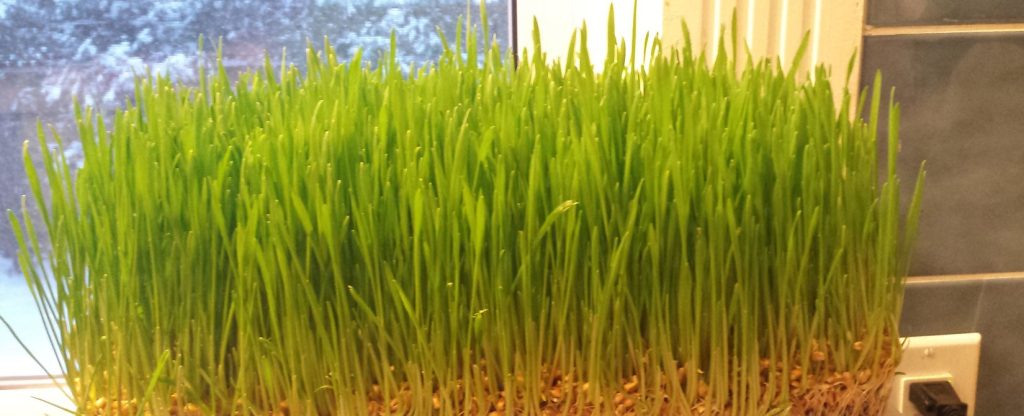
Update 2020: The world had to face the COVID 10 pandemic, which infected millions of people and took the lives of tens of thousands of patients from around us. There is no better time to educate people on the benefits of using superfoods to strengthen our immune systems than now. You would have probably heard the term superfood thrown around frequently these days about all the benefits of this nutrient-rich addition to the diet. It is becoming more popular as people have become more conscious about their health and healthier lifestyles. But, you might still be wondering what superfoods are. Superfoods do much more than meet your daily vitamin and mineral needs while helping shed a few extra kilograms in time for the swimsuit for the summer. These foods will help you achieve better health and help prevent chronic diseases while improving your daily feel. Some of these superfoods also have anti-ageing properties. A combination of regular exercise and a balanced diet with the addition of these superfoods to your daily lifestyle can benefit various aspects of your health. What Are Superfoods? More and more people are aware that eating healthy has a significant impact on the way we feel. For example, you are highly likely to feel lethargic, weighed down, and sluggish if you fill up processed junk or fast food. Instead, fill up with loads of nutrient-rich fruits and vegetables, and you will most likely feel good and full of energy. Superfoods take you to the next level by helping to optimize your bodily functions by providing abundant nutrients. There are no benchmarks to the definition of a superfood. But, generally, these foods are loaded with nutrients that provide your body with vitamins and minerals; you need to feel great and thrive. You are bound to feel much better than ever if you include a few servings of these foods in your daily diet paired with regular workouts. The benefits of top 15 Superfoods 1. Acai Berries The acai berry is an essential player in defining what superfoods are. They contain a high content of healthy fats, phosphorus, potassium, fibre, an assortment of vitamin Bs, and magnesium. In addition, studies have shown that acai berries’ compounds can help maintain healthy blood sugar levers, enhance cognitive function, and enhance lipid profiles. Due to its increasing popularity, acai powder is more commonly available at health food stores, making a nourishing bowl or mixed into smoothies. 2. Almonds Almonds are one of the nuts that are rich in nutrients that is available, They are among the best non-dairy sources, high in protein, vitamin E, and calcium. Almond provides more milligrams of calcium per serving than any other nut. You can enjoy these nuts by soaking, roasting, or even raw as a tasty snack. However, you will have to keep in mind that almonds are high in calories, so you will control your consumption to avoid unwanted weight. 3. Avocados Avocado is a perfect example of the question – What are superfoods? It is near impossible not to include this super nutritious fruit in the superfoods group. Although avocado is enjoyed chiefly and used in cooking as a vegetable, it is a fruit. The avocado is rich in good cholesterol, good for the heart, vitamins C and K, and folate. It is also one of the best sources of potassium; it contains more bananas. There are numerous ways to enjoy this creamy fruit. You can add it to a salad, sprinkle some seasoning, and eat or even spread it over a slice of bread. 4. Blueberries Blueberries are packed with nutrients even though their tiny size and are another example of a great superfood. Blueberries contain manganese, phytochemicals, vitamin C, vitamin K, and disease-fighting antioxidants. It can be used as a natural sweetener in salads, enjoyed on its own as a healthy snack, add them to baked goods, and the best of it all; these are not only healthy but has the bonus of being delicious. 5. Broccoli Rabe It is also known as rapini. Broccoli rabe is a green vegetable that is on the list of top 10 superfoods without question. It is brimming with bone-strengthening vitamin K, folate, calcium, manganese, and vitamins A and C. The compounds found in this vegetable are believed to help reduce inflammation, protect against eye disease, improve the heart’s health, keep the skeletal structure healthy, and even help prevent the advancement of cancer. 6. Cinnamon This delicious bark does more than add flavour to sweet treats and seasonal drinks. It is high in antioxidants; it has been associated with improvements in nausea, PMS symptoms, decreased inflammation, and lowered blood sugar levels. Sprinkle some cinnamon over your smoothie, porridge, or yoghurt to increase the nutritional value of a healthy breakfast and enjoy the numerous benefits from this priceless spice. 7. Coconuts Coconut and coconut oil are high in medium-chain triglycerides, a healthy fatty acid that helps support your intestines’ improvement with its bacteria-fighting antioxidant properties. These easily digestible fatty acids are quickly burned to provide immediate energy as fuel rather than stored as fat. Coconut oil has been associated with not just weight loss but also preventing bone loss. Make sure to use it with unrefined extra virgin olive oil for your cooking and baking to add a dose of healthy fats. 8. Flaxseeds Flaxseed contains omega-three fatty acids that are great for your heart, improve the brain’s functions, reduce inflammation, and even prevent diabetes and cancer. These seeds are high in phosphorus and manganese thiamin and contain fibre and protein in every help. You can acquire the benefits of flaxseeds by using them in everything from hummus, cereals, and salad or by consuming flaxseed oil in either capsule or liquid form. 9. Goji Berries Goji berries have up to 12 times the antioxidant levels of blueberries. So it’s not surprising that these berries top the charts as one of the most nutrient-packed superfoods that benefit both women and men. Goji berries have been
Benefits of sea buckthorn leaves tea
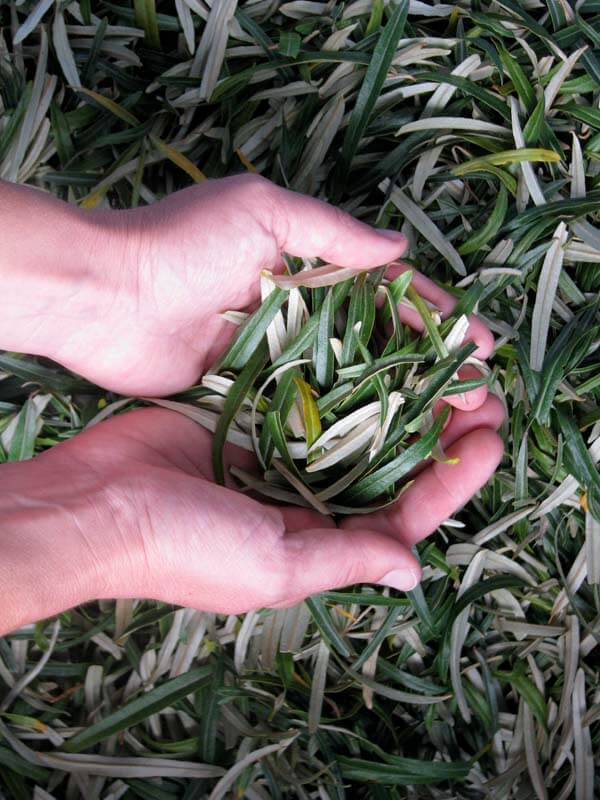
Sea Buckthorn Tea for Weight Loss Were you aware that not only the berries but even the leaves can be made into herbal tea with some exciting health benefits? Drinking tea from the sea buckthorn leaves, also known as seaberry leaves, can be particularly helpful in reducing excess weight, pain caused by rheumatoid arthritis, or even improve one’s overall health by its consumption as it contains numerous antioxidants and antibacterial phytochemicals. Weight Loss Most people are aware that excess body weight causes all sorts of health problems. However, most people are unaware that excess body fat around the abdominal area, also known as visceral fat or central obesity, can be dangerous as it increases cardiovascular diseases and diabetes. A healthy diet and regular exercise are the most effective weight loss practices. However, many herbal infusions and dietary supplements are available nowadays as an alternative to weight loss. The sea buckthorn plant, also known as Hippophae Ramnoides, is a flowering plant family Elaeagnaceae species. It is native to the cold-temperate regions of Asia and Europe. In one of the many kinds of research, this plant significantly reduced visceral fat in obese mice. Anti-Inflammatory and Anti-Arthritis Properties Weight loss is not the only health benefit of drinking sea buckthorn tea. A study in India was published in the November 2005 issue of the Journal – of International Immunopharmacology discovered that the sea buckthorn leaf extracts reduced anti-inflammatory symptoms in mice, proving the potential to treat arthritis. Rheumatoid arthritis is an inflammatory joint disorder characterized by stiffness and pain in the affected areas. It is estimated to affect more than a million Americans, escalating the demand for this often incapacitating condition. If you are interested in learning more on any of the mentioned subjects, you can study more at http://www.seabuckthorninsider.com/health-benefits/joints-and-arthritis/. Antioxidant Activity The potent antioxidant properties in seabuckthorn berry juice have been attributed to its many outstanding health benefits. A group of researchers in India discovered that the sea buckthorn leaf extracts had potent antioxidants when measured in conventional methods used to evaluate antioxidant potency in food and drinks. Food and beverages with high antioxidants protect from diseases related to old age, such as cardiovascular disease, macular degeneration of the eye, Alzheimer’s disease, and cancer. In addition, beverages rich with antioxidants, such as sea buckthorn tea, make an excellent benefit to anti-ageing diets because of the ability to get rid of free radicals and unstable oxygen molecules, which cause sagging skin and wrinkles.
Trekking in Nepal during Monsoon

What is Monsoon trekking in Nepal like? The monsoon begins around mid-June; it peaks during July-August and winds down in early September. As a result, the temperature increases, as do the humidity and rain. Although clouds often cover the mountains, temperatures can get uncomfortable in the lower elevations and showers almost daily. You may even find yourself acquainted with leeches in the lower areas, but fear not – leeches don’t climb as high as we do! So, where should you trek in the monsoon? We say, go to the northern side of the Himalayas, known as the rainshadow. What to expect during the monsoon When trekking in the lower altitude forests, you can expect a dense build-up of fog and clouds. However, the clouds occasionally clear up to reveal the stunning mountains and valleys. This happens especially after a night of heavy rain. You can expect anywhere from 4-6 hours of rain varying in intensity; occasionally, it can rain continuously for 2-3 days. Trekking tips for monsoon treks It is better to start your day early; generally, it starts raining in the afternoons. However, there tends to be a pattern in the weather; ask your guide or local lodge owners how it has been for the past week or ten days. Although the trend is not guaranteed, you have something to go by to make plans accordingly. Recommended gear for the monsoon It is best to have an umbrella in the lower elevations – if you don’t use trekking poles – because it will be sweltering even with the best quality raingear. I prefer to trek in the rain without rain gear; I feel it is better to get wet from the rainwater than my sweat. Also, the humidity and temperatures drop as you gain altitude, making it more pleasant. However, it can still rain, and it is advisable to put on rain gear at higher elevations. Sometimes the humidity is so high that even quick-dry clothing won’t dry overnight! Transportation during the monsoon Getting to the trailhead can be the primary challenge during this season, as flights can be delayed by poor visibility, and roads can be muddy or even blocked by landslides. It is always better to have a couple of extra days to factor in delays and give yourself a safe buffer. If you plan to fly in or out of your start/endpoint, find out if there is an alternative road route close by and ask if the road is open. Advantages of Monsoon Trekking You might see a few other trekkers on the trail. You could be just the only person/s staying at the lodge. You will get lush vegetation, and the farmland is busy with livestock and farmers. You get to smell the fragrances of plants, trees, and soil. In the higher elevations, you will see beautiful giant moths. You might get to eat freshly harvested wild vegetables, herbs, and mushrooms at the lodges you stay in. Plus, the sound of the rain helps you fall asleep quickly and slumber deeply. Given it’s the ‘off-season,’ your inn-keepers, guides, and porters will also appreciate your business much more. But unfortunately, the off-season is a hard time for those active tourism. Hazards that come with trekking during the monsoon: Trekking trails can be muddy and slippery. Be careful of slippery roots when trekking through forests. Landslides can be a hazard; walk briskly with utmost caution when you cross landslide areas on the trail. DO NOT stop to take photos in the middle of the landslip area if two or more of you take turns crossing the landslide area while the other person looks out for falling rocks. Leeches can be an annoyance while trekking in Nepal during the monsoon. Take a small pouch of rock salt and chewing tobacco mixture; dab it on the leeches when they get on your boots, clothes, or you. You must dip the pouch in water to moisten it for better effect. Some people burn leeches or use Dettol or regular salt. However, the rain can wash them off, making rock salts and chewing tobacco mixture a preferable choice. Thunder and Lightning storm It is not regular, but occasionally there might be thunder and lightning or storms. Seek refuge in a vehicle or grounded building when lightning and thunder begin. In case you are caught in a storm: If you are far from a vehicle or a building, stay clear from tall objects like trees, electric/telephone poles, and bodies of water. Instead, find a depression or a low spot and make yourself as small as possible – DO NOT lie down on the ground. If you are a group, spread yourselves 50-100 feet away to avoid multiple victims, as lightning can travel along the ground. If you are indoors, avoid taking showers or laundry and charging your phone or other gadgets. Stay indoors for at least 30 minutes after the last seen lightning or since the last thunder. As mentioned before, landslides could block the roads, or flights can get cancelled due to bad weather. Monsoon 2020 We experienced almost double the rainfall in June and July. This caused landslides and floods in Nepal, bringing death and destruction. Trekking regions that fall into the Rainshadow areas are listed below:










